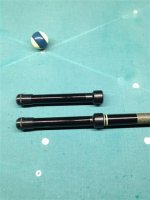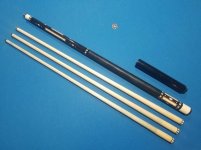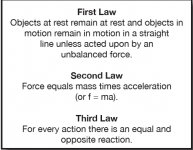Another observation from my visit to watch the Turning Stone tournament this weekend. A lot of players were using cue extensions. Shane had one on the bottom of his shooting cue. He seemed to take it off when he jumped, but put it back on after the jump shot. Jason Shaw had one on his shooting cue, and I think his was a mid-location extension. Billy Thorpe had a small one on the bottom of his shooting cue, and there were a few others that used them as well.
I realize that on 9 foot tables, these extensions help on those shots bordering on when you'd need to use the bridge, but leaving them on all the time makes me wonder if there is some other perceived advantage. Does the additional weight help? Balance adjustment maybe?
I realize that on 9 foot tables, these extensions help on those shots bordering on when you'd need to use the bridge, but leaving them on all the time makes me wonder if there is some other perceived advantage. Does the additional weight help? Balance adjustment maybe?



